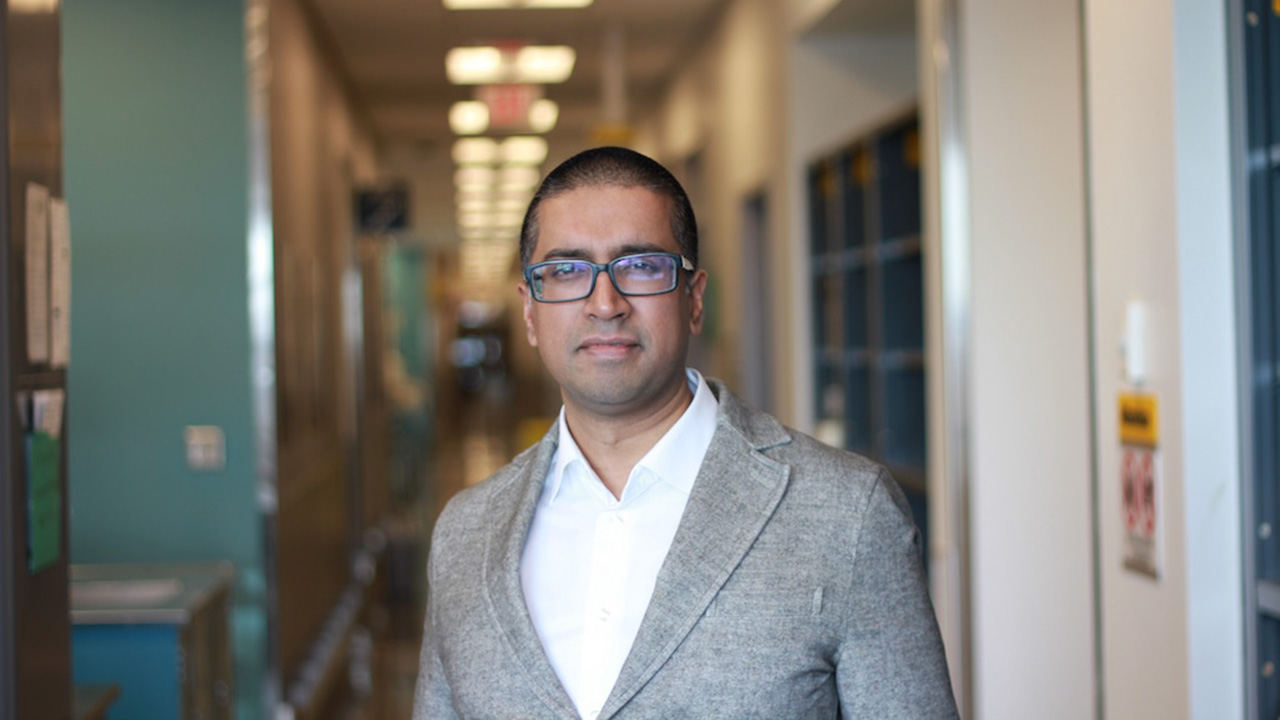Optimism bias
What would motivate someone, after earning his undergraduate degree, to spend nearly 20 more years preparing for his vocation?
For Dr. Chinthaka Heyn, who began the MD/PhD program at the University of Toronto in 1998, and whose career began in earnest at age 40, the answer boils down to being able to bridge the worlds of discovery and medicine: “I see myself as a facilitator, or a link between different people. If there’s a basic scientist or physicist who’s working on something and I can see a connection between that and something we’re doing [clinically], it’s really nice to bring those people together. I like that part of my job,” says Heyn, who is a newly appointed associate scientist in the Odette Cancer Research Program at Sunnybrook Research Institute (SRI), and a radiologist at Sunnybrook.
He has already established collaborations with SRI faculty. Heyn, along with Drs. Arjun Sahgal and Hany Soliman, clinician-scientists at SRI, are studying diffusion-weighted MRI to assess response after radiation therapy. This imaging technique maps the diffusion of water molecules to generate contrast in MR images. They’ve used it to detect a complication called radionecrosis, which is dead tissue that forms at a tumour site after treatment. “Being able to distinguish that, which looks on conventional MRI like tumour recurrence, is very important,” says Heyn.
His expertise is in noninvasive molecular imaging, which shows biological processes that occur at a cellular or molecular level. Unlike standard MRI, CT and ultrasound, which depict structures in the body, molecular imaging can provide physiological insights about disease, which in turn could inform treatment strategies.
In collaboration with colleagues from SickKids hospital, he is studying a new class of MR contrast agents based on chelates of lanthanide metals such as thulium. In particular, Heyn is using these novel contrast agents to measure parameters such as temperature or pH level, which could be used to identify areas of tumour hypoxia, or low oxygen. “A tumour that’s well-oxygenated will have a better response to radiation,” says Heyn. “Hypoxic tumours have a lower pH because they’re undergoing glycolytic metabolism, which produces lactate or lactic acid, which is acidic, so they have lower pH.”
Heyn aims to integrate this work with research Sahgal is leading to optimize use of MR-linear accelerator technology, a combined MRI and radiation therapy device. Sunnybrook is part of a global consortium to enhance use of this technology; the hospital has one of only a handful of units in the world.
The ability to monitor therapy response and obtain physiological information in real time heralds a new paradigm in medicine that is being called adaptive planning. Currently, a person with cancer will undergo MRI or CT, which doctors use to plan delivery of radiotherapy. Over many weeks, that patient will have numerous treatments during which the care team “will use pretty much the same plan, the same map, acquired on day zero throughout [the course],” says Heyn.
In contrast, adaptive planning enables doctors to alter treatment based not only on changes to the tumour’s shape and position, but also on its molecular features. “With this molecular information we could say, ‘there’s a hypoxic area, an area with low pH. This is a radioresistant area; we should boost radiation to that area.’ The thinking is that that kind of adaptive planning will improve response for patients. It’s going to take years to prove that, but that’s the way the field is going. My job as a radiologist and scientist is to provide new tools so we can do that better,” says Heyn.
In the past, he says, it was enough to know if a tumour had shrunk, which can only be determined weeks after treatment. “Today, we want to know within days, or even hours, after treatment that there’s a response, because if it’s going to fail, we want to be able to change strategies or add something.”
Heyn acknowledges that the tools he is developing, while innovative, may take decades to be translated clinically, if ever. Be that as it may, he sees value in pursuing this research even if skeptics doubt its usefulness. “You always have to fight that thinking. If we thought like that, nothing would ever happen,” he says. “You just never know where the next innovation will come from and how that’ll impact things. I think most things in medicine and science are unpredictable and that’s great.”



